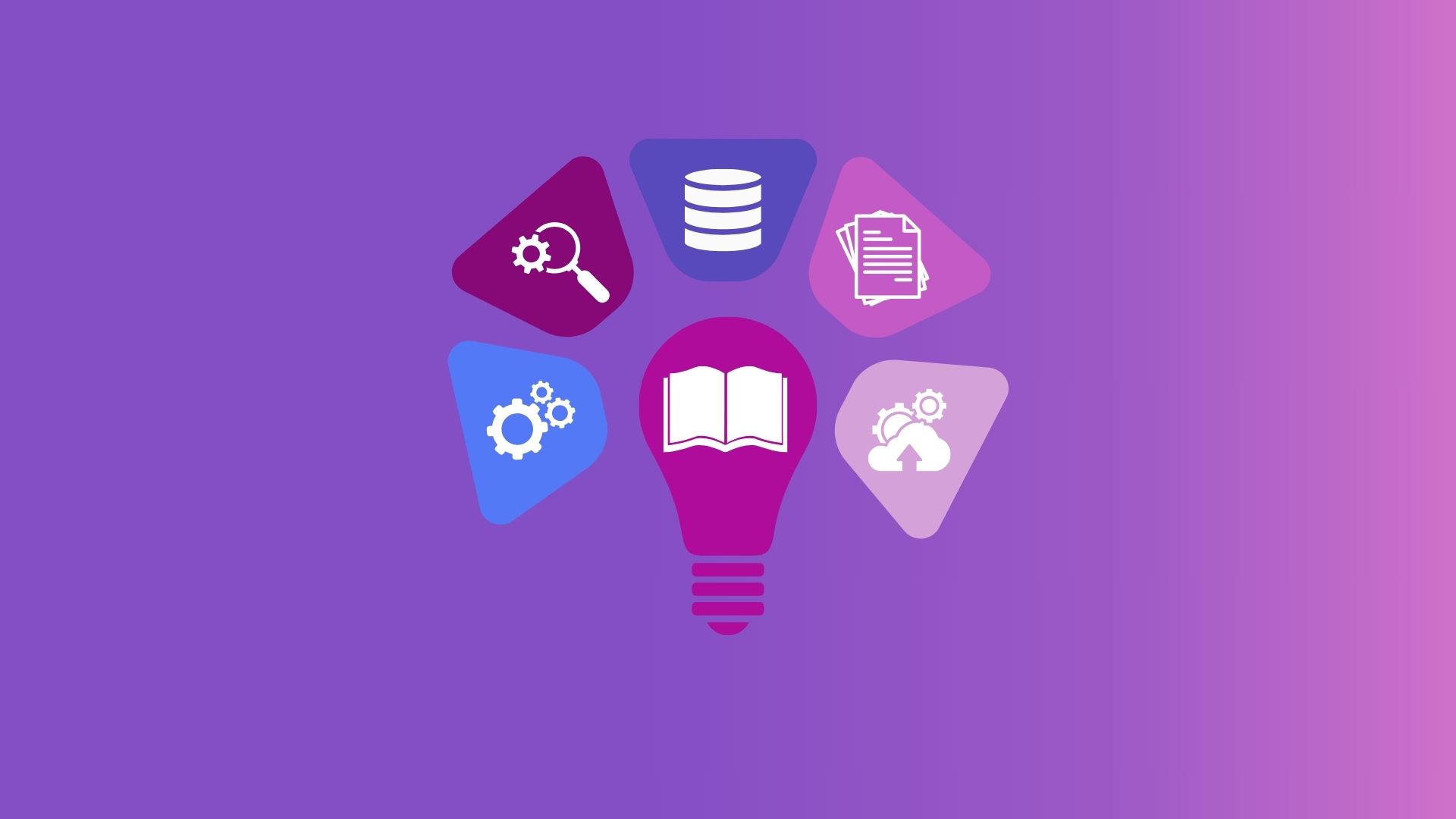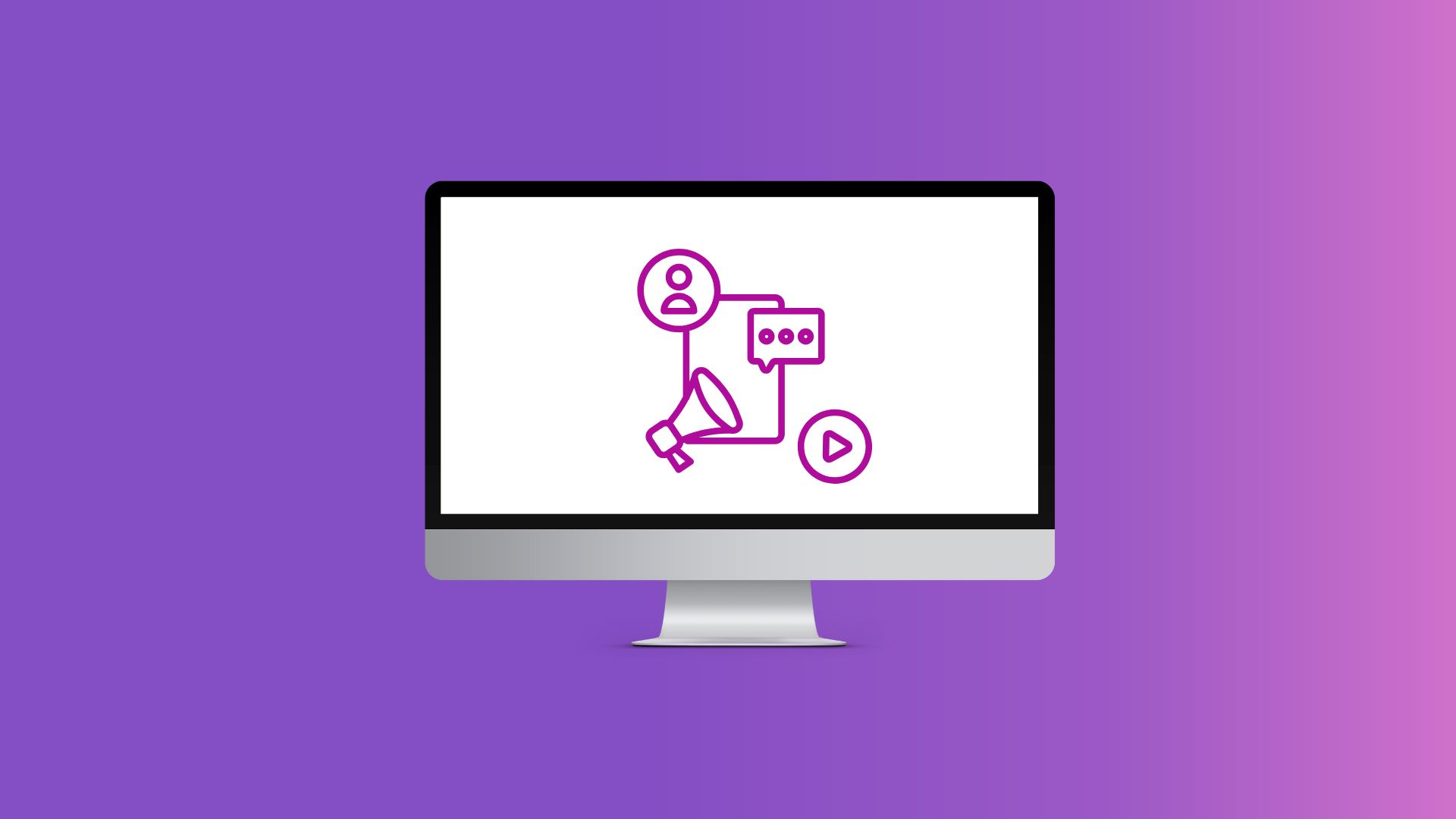Creating a Winning SaaS Marketing Plan for 2025: A 10-Step Guide

What Is an Effective SaaS Marketing Strategy?
A SaaS marketing plan is vital for the growth of both small to medium-sized businesses and enterprise-level companies in the SaaS market, focusing on engaging and re-engaging new customers whose contributions are mostly through recurring subscriptions.
SaaS marketing differs from traditional digital marketing strategy. It encompasses all B2B SaaS sales funnel stages, from lead generation and personalized solutions to growing organic traffic through social media and search engines.
Key components include strategies for SaaS product marketing, customer acquisition, potential customer onboarding, churn reduction, and increasing customer lifetime value (CLV). All of these are essential for long-term loyal customer retention.
Continually adapting and refining these strategies in response to changing target market conditions is crucial for maintaining a competitive edge for all SaaS marketers.
It’s a detailed process, but the rewards are just there for the taking if you do it correctly. To stay competitive, it’s essential to continuously refine and update your approach, incorporating elements of best SaaS marketing strategies.
1. Setting Clear Objectives for Your SaaS Marketing Plan
When you have a plan, it goes without saying that you have goals to measure marketing success. While you can exercise a certain level of freedom on the goals you plot, they must have these two key attributes: achievable and business-aligned.
Additionally, aligning your SaaS marketing objectives with your marketing budget is crucial for ensuring that resources are efficiently allocated towards channels and initiatives that offer the best ROI and keep customer acquisition costs low.
Defining specific, measurable, achievable, relevant, and time-bound (S.M.A.R.T) goals
When plotting your SaaS marketing plans, the key is not to go too far ahead. We can’t blame you if you want to go for the home run immediately, but it’s also better to have a ladder-like strategy that will always veer you in the right direction.
Having said that, you have to do it the S.M.A.R.T way, which is specific, measurable, achievable, relevant, and time-bound. Setting your goals through this approach will help guarantee a more efficient SaaS marketing operation, particularly in the areas of research and budget allocation.
Aligning marketing objectives with overall business objectives
Another consideration when plotting your SaaS marketing plan goals is to align them with your business objectives. Your business might be targeting different priorities yearly, and that encompasses your marketing goals too.
The challenge here is how to streamline the process in a way that all departments are collaborating in the same direction. Everything has to be aligned across the board, including your sales teams, product development, and marketing teams.
The bigger your company is, the more difficult it is to streamline your marketing objectives with other teams. The key is to build a collaborating culture from the ground up, which will help you become more efficient in achieving your short-term and long-term goals.
2. Understanding Your SaaS Target Audience
An effective SaaS marketing plan is a customer-centric one, and that will always be the case in this space. To make the most out of your marketing strategy, you have to pinpoint which buyers need your product the most. You can only do this by laying down the groundwork and studying the market. Understanding the unique needs and preferences of SaaS customers is crucial in developing a marketing plan that effectively attracts, retains, and engages them.
Identifying buyer personas and their pain points
Even if you have identified your audience base, you should anticipate that they still have different needs for your product or service. For this reason, you have to develop various buyer personas that will help you pinpoint the pain points that you should address.
For a particular product, you may develop multiple buyer personas to know which customer needs you need to focus on. When doing a buyer persona, you should include these important demographics:
- Age
- Background, occupation, and income
- Geographic location
- Current interests and hobbies
- Behavioral patterns on digital platforms
Conducting market research to understand audience preferences
To gather the information that you need in developing buyer personas, constantly studying the market isn’t just a requirement; instead, it should be treated as a religion. Customer needs and interests change over time, which begs for the need to regularly research the market.
There are tons of avenues for you to collect information about your niche audience. SaaS marketing automation tools like Salesforce, HubSpot, and Zendesk allow you to obtain customer data and see how users interact with your SaaS website. Moreover, you can dive into more traditional means like surveys, focus groups, and SaaS review sites.
3. Choosing Effective SaaS Marketing Strategies
To keep up with the evolving nature of the SaaS space and enhance your SaaS marketing efforts, you don’t have to stick to one strategy. There’s a variety of strategies that you can use when doing a marketing plan for a SaaS company, as we detailed out below for your reference.
Incorporating social media marketing into your outbound strategies can significantly amplify your reach, enhance brand loyalty, and increase sales by leveraging platforms to connect with your target audience directly.
Inbound marketing: content creation, SEO, and lead nurturing
In this day and age of digital marketing, content creation and SEO (Search Engine Optimization) have become more impactful. Your audience needs something that they can see right away, and what better route to take than creating engaging content on social media platforms and search engines.
Inbound marketing is a traditional marketing approach that offers solutions that are centered around your audience’s pain points. It could come in the form of relevant infographics on social media, or in the likes of whitepapers, eBooks, and case studies on your websites.
Either way, the priority is to provide relevant and helpful content, which makes inbound marketing strategy more prominent in the SaaS marketing strategy.
Outbound marketing: paid advertising, email campaigns, and social media
Inbound marketing has taken on a higher level of importance these days, but it doesn’t hurt to include outbound marketing in your SaaS marketing campaigns. Outbound marketing involves paid advertising and email campaigns, two marketing tactics that could expand your audience base right away.
Many people see outbound marketing as a shortcut towards rapid growth, but it does work if you use it wisely. It can increase brand awareness among people who haven’t heard of your business yet. If you manage to create a good balance between your inbound and outbound marketing activities, your SaaS business should be able to thrive.
Influencer partnerships, referral programs, and affiliate marketing
Along with inbound and outbound marketing, another approach is to collaborate with other figures and brands. Influencer partnerships, referral programs, and affiliate marketing are all effective strategies if put in the right context and moderation.
Most particularly in influencer partnerships, you have to make sure that you’re collaborating with someone who is aligned with your business objectives. This way, you’re also tapping into another audience base that’s related to your niche, which could then lead to potential acquisitions on your end.
4. Mapping Out Your SaaS Marketing Channels
For SaaS businesses, having a plethora of options can complicate the selection of the most effective marketing channels. It’s crucial to tailor your SaaS marketing plan to meet the unique needs of SaaS companies, ensuring that not all marketing channels are treated equally.
You should maximize your traditional marketing efforts (and expenses) by choosing the platform that best aligns with your brand’s specific requirements.
Selecting the most suitable digital marketing channels
The first step to selecting the most suitable digital marketing channels is to know where your niche audience is most active.
Do they tend to consume more video content? Then you might want to venture into video marketing on YouTube and TikTok.
If they are businessmen who are more inclined towards long-form, written content, then pouring your energy on SEO could drastically increase your click-through and engagement rates.
Once you have crunched the numbers and determined what type of content your audience is more likely to engage in, it becomes easier for you to know which digital marketing channel to focus on.
Integrating social media, content marketing, paid ads, and email marketing
As we mentioned just a while ago, a healthy balance between inbound and outbound marketing could help you achieve your goals. You need to develop a holistic view where you try to connect the dots with each marketing strategy, essentially bringing them together into one SaaS marketing plan.
For example, you can integrate an outbound strategy like email marketing into your social media campaigns. You can use your social media platforms to encourage people to subscribe to your email list or to invite them to take a look at your website’s library of helpful content.
Through cross-platform promotion, you can take advantage of different marketing channels and increase the visibility of your SaaS brand.
Considering emerging channels like voice search and interactive content
Along with traditional and digital marketing channels, emerging platforms like voice search and interactive content are also gaining traction nowadays. The advent of voice search is not a surprise, especially with people trending towards hands-free queries on search engines like Google.
To this point, you need to optimize your website content to the tune of long-tail keywords and questions that your target audience would frequently ask.
There’s also the rise of interactive content, both on the web and social media. Through interactive content, you could easily engage and re-engage with your audience, particularly in the form of games, surveys, and polls.
5. Content Strategy for SaaS Marketing
Even if you have determined the right marketing channels for your brand, a big chunk of your SaaS marketing plan still hinges on your content strategy. Content is still the king in marketing, especially in the digital space where people see tons of content daily.
Developing valuable, informative, and engaging content for new and existing customers
Building a strong foundation for your content strategy is the first step you should take. Your target customers should be the focal point of your content library, but what are the pain points that you want to address?
These pain points would become the theme of your content, which you would then distribute across different marketing channels.
Moreover, you should also pay attention to the tone of your content. Even though you have a high level of expertise in your space, you can’t sound condescending or too authoritative toward prospective customers.
There has to be an educational approach where you take your audience through a step-by-step journey centered on helping their cause.
Creating content for different stages of the buyer’s journey
Speaking of taking your audience through a step-by-step journey, creating a series of content for each stage is something that marketers often overlook. Most people get caught up on launching that home run of a single content, thinking that it’s easier to increase visibility by becoming an overnight sensation.
But if you want to have higher chances of converting and retaining potential customers, crafting helpful content for each stage of the buyer’s journey is a crucial driving factor. For your reference, here are the different buyer’s journey stages that you need to have specified content for:
- Awareness – becoming aware of their problem or pain point
- Consideration – comparing different providers of the solution they’re looking for
- Decision – tapping into a provider of their choice
Balancing educational content with promotional content
As we mentioned earlier, your SaaS content marketing strategy should have a balance between sounding authoritative and educational. Another aspect of the SaaS marketing plan that needs balance is weighing your educational content with your promotional content.
As much as you want to expand or diversify your target audience base with promotional content, your successful SaaS marketing strategy should still have more educational content. You need to earn the trust and loyalty of your audience, and you can only do that through your helpful content.
When you give them something that helps with their pain points, you’re also paving a path for promoting your SaaS product.
6. Budget Allocation and Resource Planning
Whether you’re just starting your SaaS journey or you’re already a big whale in the industry, allocating your budget and resources wisely will help you stay competitive. ROI (Return On Investment) is important across all levels, as you’ll see in the following sections.
Allocating budget to various marketing initiatives
Here’s a quick trivial fact: SaaS companies usually allocate half of their revenue on marketing and sales efforts. You cannot just let word-of-mouth marketing naturally do its work; being proactive with your marketing strategies and investments will help you gain a competitive advantage.
Whether you’re an early-stage startup or in a high growth stage, these are the different areas that you need to allocate a budget for:
- Paid advertisements on social media and search engines
- Content marketing strategy
- Press releases
- Brand promotional events
- Website optimization and maintenance
Determining resource needs for content creation, design, and execution
It goes without saying that you need a creative team to craft a brilliant content strategy. Manpower is still the best resource in today’s digital age, although it does not mean that you should ignore other tools and resources available to you.
Planning your content around keywords is one of the most important steps in content creation. You can use tools like Google Trends and AnswerthePublic for keyword research, then you can utilize the likes of Notion and Buffer to help you schedule and execute your content pieces.
7. Implementing Data-Driven Decision-Making
The great advantage of doing digital marketing is you also have access to the best tool that help you track and monitor your campaigns.
These project management tools will help you optimize your marketing efforts on the go, leading to a more efficient allocation of budget and resources.
Setting up analytics and tracking tools for accurate data measurement
Digital marketing platforms like Facebook, Twitter, and YouTube all have in-house analytics and tracking tools where you can see how your campaigns are performing. That’s the same scenario for your SaaS website since it’s already integrated with free tools like Google Analytics and Google Search Console.
On top of that, you can also tap into other third-party tools and software. These tools might require paid versions, but the accurate data measurement they give will be worth every penny. These SaaS marketing analytics tools include:
- HubSpot
- MixPanel
- Amplitude
- Klipfolio
- SEMrush
- Heap Analytics
Monitoring key performance indicators (KPIs) for each marketing channel
You can keep track of every measurement there is, but it’s recommended to focus on the facets that align with your immediate goals. Your KPIs don’t just depend on your business goals, but they also vary for each marketing channel you’re using.
For example, it’s important that you focus on bounce rate and session duration for your website, while it’s vital to keep track of your organic engagement and shares on social media. Other SaaS marketing strategy KPIs include these attributes:
- Traffic conversions
- Web visitors via different channels
- Click-through rate
- Unique monthly visitors
Using data insights to refine strategies and optimize campaigns
Since you have access to all these analytics tools, the important thing is to adapt to the trends and changes.
As we have mentioned multiple times in this detailed guide, consumer interests and pain points might change in a snap, which could either make your current SaaS marketing strategy more or less impactful.
Having said that, these tools will provide you with real-time data-driven insights. The key is to use this information to optimize your marketing campaigns on the go.
8. Campaign Execution and Timeline
Your SaaS marketing plan should always be aligned with the current market trends and consumer pain points.
This is why you must plan your content, which you can do by creating content timelines and schedules.
Creating a timeline for campaign execution
Considering that your SaaS company is using multiple marketing channels, managing all your campaigns could be a bit overwhelming. On top of that, you likely have more than one content to post daily.
This is why creating a timeline for your campaign execution will make your life easier. Along with this content timeline, social media, and CMS (Content Management System) platforms also allow you to schedule posts, ensuring that you’re on top of every planned content.
Planning launches, promotions, and events strategically
Any promotional event that you launch should always be relevant to your current business goals, as well as to the current market trends. Whether it’s an in-person event or a digital one, having a relevant theme could attract more eyes to what you’re planning.
Moreover, an effective strategy when doing product launches or promotions is to get your audience to engage in it. You could do this by announcing in-event giveaways or games, which could build up more hype for the event itself.
9. Testing and Optimization in SaaS Marketing Campaigns
Even if you have done your due diligence in researching the market, not all of your campaigns will work exactly the way you want them to.
This is why your SaaS marketing plan should include A/B testing as a way to fully optimize your campaigns.
A/B testing different elements of campaigns
A/B testing refers to the process of simultaneously launching multiple variations of a single campaign to fully optimize every element of it. By testing these variations, you can extract the most potential out of that particular SaaS marketing strategy campaign.
Also known as split testing, you could vary even minor elements that could have a bigger impact on your campaign. You can test the following elements:
- CTA (Call to Action)
- Colors for infographics
- Subject lines for email marketing
- Headlines and captions for social media
Continuously optimizing based on test results and data analysis
Once you have your A/B testing results, the next step is to optimize your campaign and launch it at a more relevant time. It should not be a one-off optimization, though.
Since the SaaS landscape is constantly evolving, you also have to continuously optimize your campaigns.
Running A/B tests for different campaigns could exhaust some of your resources, but you’ll also gain insights on how to develop your product in the right direction.
10. Adapting to Future Trends in SaaS Marketing
Along with optimizing your campaigns based on A/B testing results, your SaaS marketing plan should also be future-proof.
Of course, the only way for you to do that is to adapt to the future trends in SaaS marketing.
Embracing AI and machine learning for personalized marketing
It is no secret that AI (Artificial Intelligence) and ML (Machine Learning) are gaining much traction nowadays. You have the rise of ChatGPT, an AI chatbot that can answer questions in a human-like form. Even content creators are getting ideas generated by ChatGPT, which leads us to our next point.
Tapping into AI and ML models could help you personalize your marketing campaigns. AI can collect customer data, analyze it, and then provide you with data-driven insights that could make your campaigns more interactive and personalized.
Staying updated with changing algorithms and customer behaviors
Search engines like Google constantly bring changes to their algorithms. These changes, whether minor or significant, could alter your SEO strategy, which is a crucial part of your SEO marketing plan. That is just one of the many changes in the SaaS landscape, not to mention the varying patterns in customer behaviors.
The key here is to always follow the news, continuously dig deep into the evolving preferences of your niche audience, and regularly check if your SaaS marketing plan is still as relevant as you want it to be.
Conclusion
There’s no definitive, single approach to creating an effective SaaS marketing plan. You should always factor in the ever-changing nature of customer interests, along with competitor movements and technological trends in your market. SaaS features a constantly evolving landscape, and your marketing tactics should also keep up with it.
If your strategy works today, you can’t rest on your laurels and think that your plan will work for the entirety. To learn if your strategy is still relevant, you need to go back to the foundation of your SaaS marketing plan from time to time. Does your content still address the current pain points of your customer base? Is your SaaS website still optimized to the tune of recent algorithm changes by Google?
Constantly fine-tuning your SaaS marketing plan will not just help you engage with your audience but will also ensure that your budget allocation is streamlined. Contact Fortis Media and we will help you to achieve your goals.
Frequently Asked Questions
Why SaaS marketing plan is important for SaaS businesses?
If you are aiming to increase brand awareness and visibility, creating a SaaS marketing plan will point you in the right direction. To counter the evolving nature of the SaaS industry, you need a strategy that includes different options backed by data-driven insights and in-depth market research.
A marketing plan for SaaS company is not just used for optimizing marketing campaigns but can also be utilized to gain information on how to develop your products the right way. You’re hitting two birds with one stone, while also making sure that you’re efficiently allocating your budget and other resources.
What strategies should I prioritize in my SaaS marketing plan?
SaaS is a big market that is packed with niche products and services. So, it goes on to say that your niche market will dictate the strategies that you need to focus on in your SaaS marketing plan. For example, if your target audience base is mostly active on social media platforms, then your social media marketing efforts should take a higher level of priority than your email marketing strategy.
What should I consider when adapting my SaaS marketing plan to future trends?
You can only make your SaaS marketing plan future-proof if you’re always willing to adapt to future trends. These trends could include changes in consumer interests and pain points, new product developments from your niche competitors, algorithm changes in the marketing channels that you use, or technological advancements that affect your product and customer base.
Whichever way the wind blows, the important thing is that you’re regularly updating your strategy, whether optimizing a current marketing campaign or pulling it out completely.
Read our other articles

Google March 2025 Core Update: iGaming Industry Impact with Real Cases


Benefits of Enterprise SEO: Why Large-Scale Businesses Need It


B2B SaaS SEO: Best Practices and Strategy for 2025






